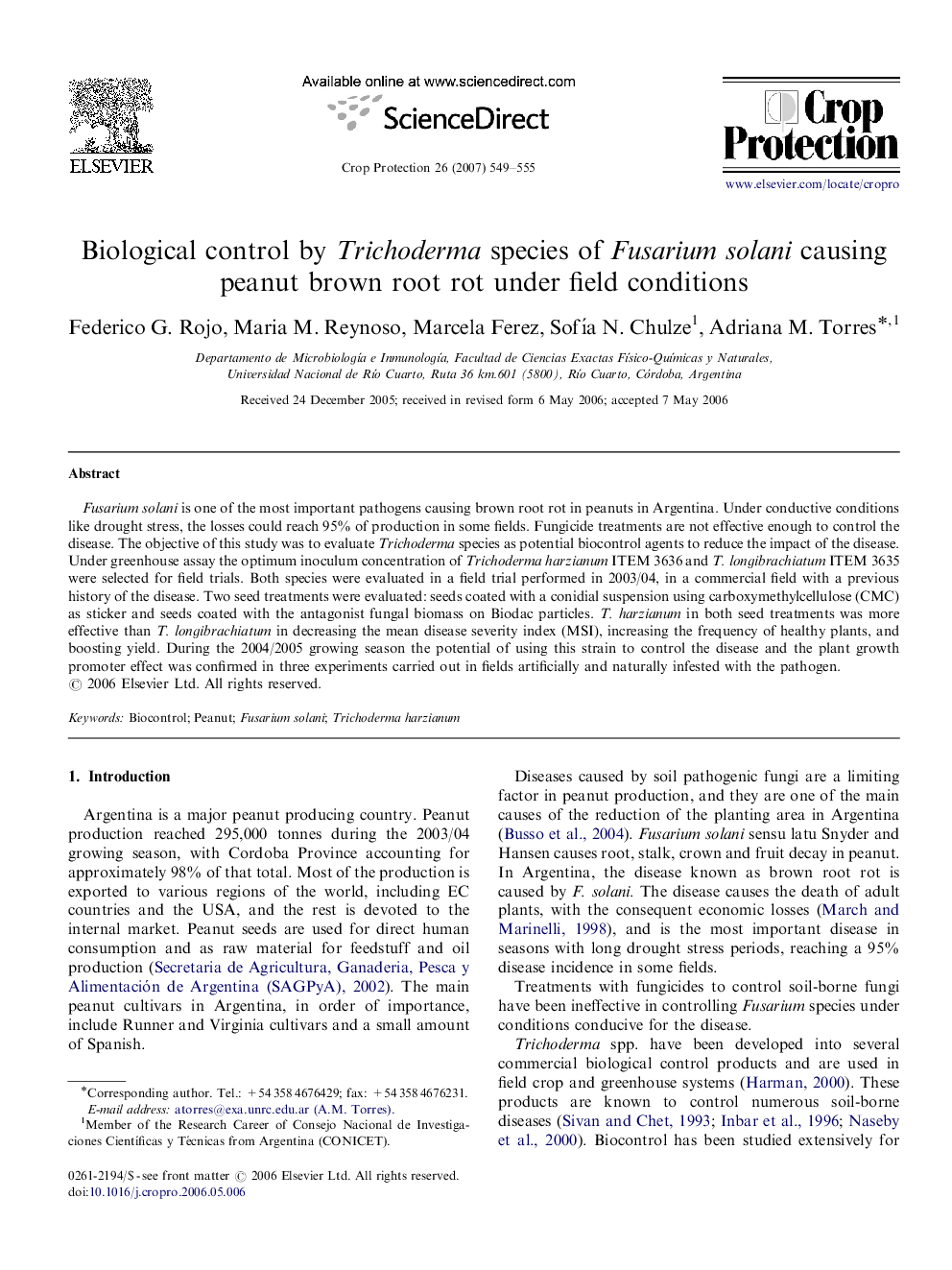| Article ID | Journal | Published Year | Pages | File Type |
|---|---|---|---|---|
| 4507180 | Crop Protection | 2007 | 7 Pages |
Fusarium solani is one of the most important pathogens causing brown root rot in peanuts in Argentina. Under conductive conditions like drought stress, the losses could reach 95% of production in some fields. Fungicide treatments are not effective enough to control the disease. The objective of this study was to evaluate Trichoderma species as potential biocontrol agents to reduce the impact of the disease. Under greenhouse assay the optimum inoculum concentration of Trichoderma harzianum ITEM 3636 and T. longibrachiatum ITEM 3635 were selected for field trials. Both species were evaluated in a field trial performed in 2003/04, in a commercial field with a previous history of the disease. Two seed treatments were evaluated: seeds coated with a conidial suspension using carboxymethylcellulose (CMC) as sticker and seeds coated with the antagonist fungal biomass on Biodac particles. T. harzianum in both seed treatments was more effective than T. longibrachiatum in decreasing the mean disease severity index (MSI), increasing the frequency of healthy plants, and boosting yield. During the 2004/2005 growing season the potential of using this strain to control the disease and the plant growth promoter effect was confirmed in three experiments carried out in fields artificially and naturally infested with the pathogen.
